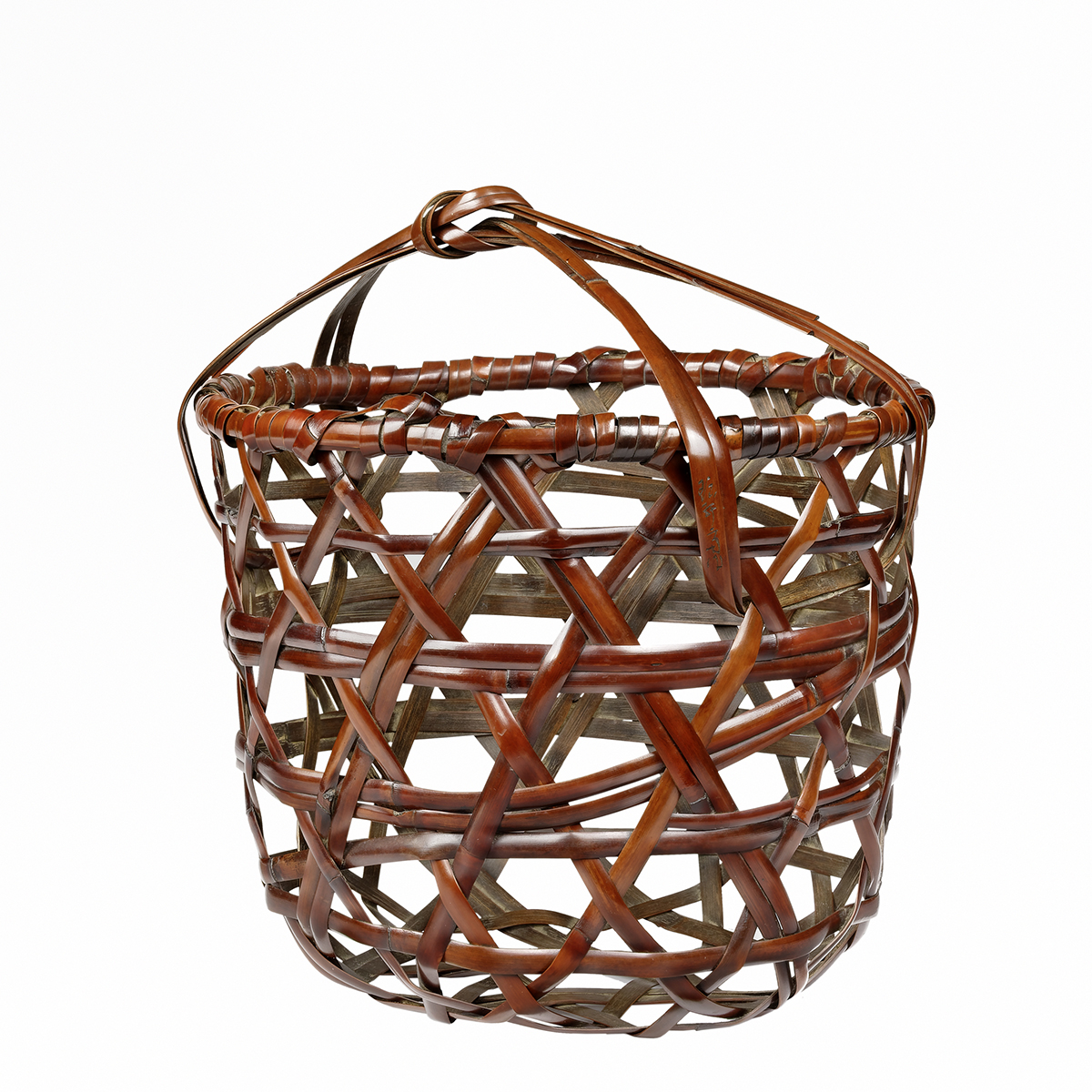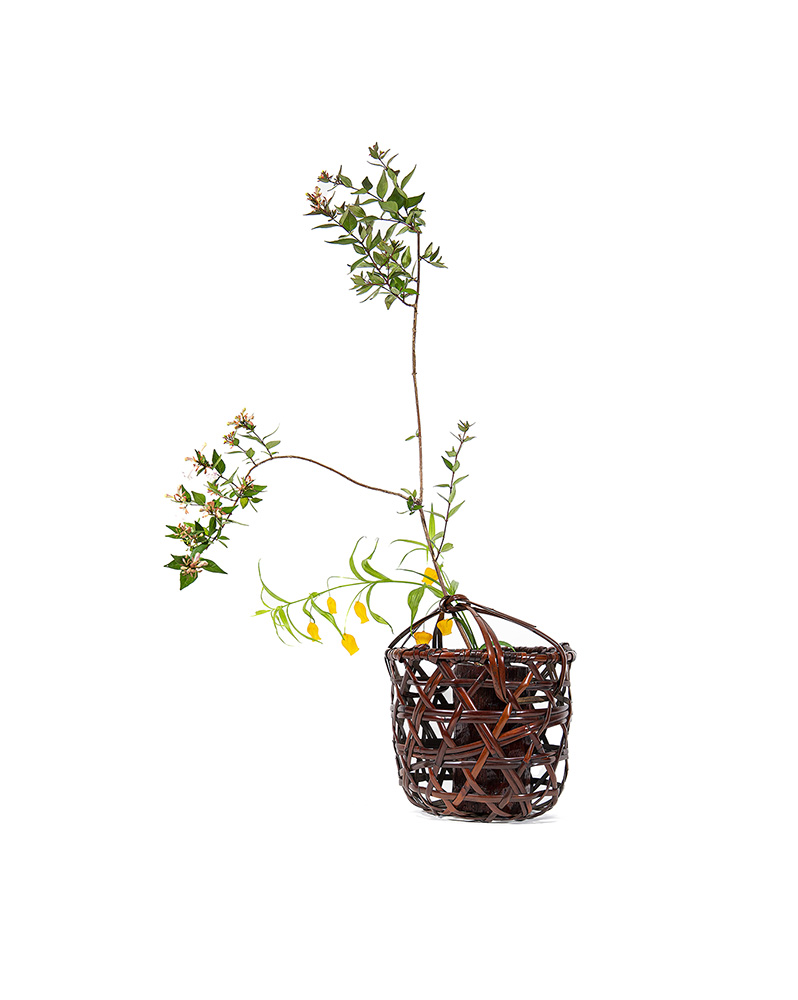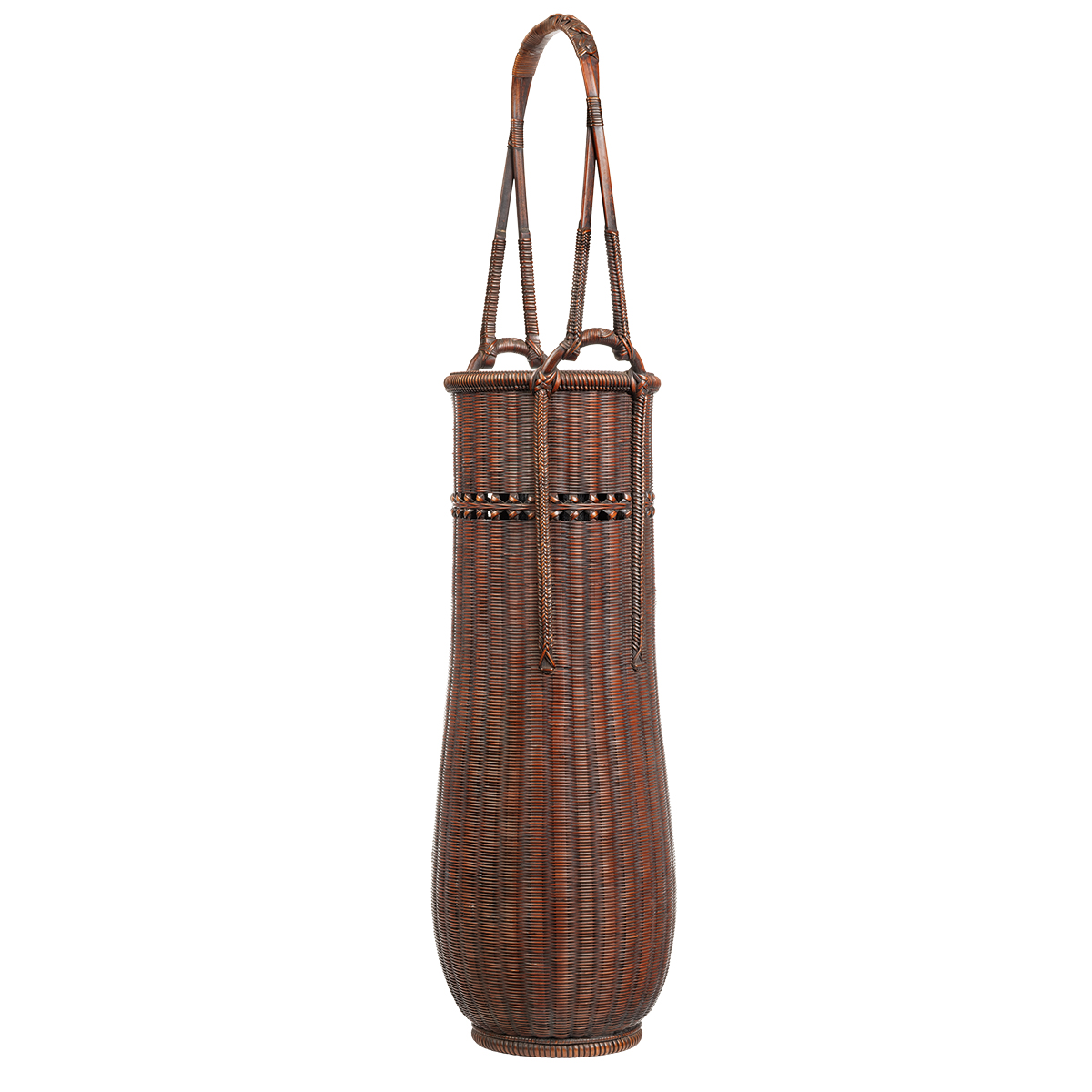Ie-Tsuto
Iizuka Rōkansai / Bamboo

- Sold
-
Material
Bamboo hobichiku
-
Size
27 (h) x 24 x 24 cm
-
Period
1938-1945
-
Box
Tomobako
-
Published
“ IIZUKA - Dynasty and disciples “ - Mingei Gallery - 2020
Description
Ie-Tsuto by IIZUKA Rōkansai (1890-1958)
The word “tsuto” is an archaic and elegant poetic name for a cocoon-like parcel which is wrapped with straws etc, but has come to refer to a souvenir or gift.
The word “Ie” means home.
This hanakago can be dated circa 1938 -1945.
In terms of his signature on the hakogaki, the hand-writing is rather withered/ very mature -- indicating its dating from the later period of the artist.
Signed "Rōkansai saku" [made by Rōkansai]
Sixth son of master wickerwork weaver Hōsai, Iizuka Rōkansai was born with the name Yanosuke in Tochigi Prefecture, and also went by the name of Yuseki. Around the age of twelve, he began to study the wickerwork arts with his father and quickly developed his aptitude for it. In spite of Rōkansai’s genius, his older brother Hōsai II, who directed the family studio, signed his own name to Rōkansai’s pieces. The latter dreamt of becoming a painter, and pursued his education at the Beaux-arts school, where he learned calligraphy, studied Sinology, and composed haikus and poetry. His background in so many different artistic forms explains the diversity seen in his wickerwork creations.
After having studied the karamono (Chinese) style weaving techniques, he established himself in Tokyo in 1910 as a wickerwork craftsman and began to exhibit the works of his which were created using traditional Japanese wickerwork techniques. Rōkansai was a pioneer in modern bamboo wickerwork and introduced many innovative weaving techniques.
In 1922, his wicker creation for ikebana titled Zushi (Buddhist altar) earned him the silver medal at the Peace Commemorative Tokyo Exposition. He subsequently received numerous awards. In 1926, he participated in the founding of the Nihon Kōgei Bijutsukai group, then displayed his work at the Teiten exhibitions in 1931, and received the Tokusen prize in 1932. After the Second World War, he became a permanent member of the jury and consultant for the Nitten exhibitions, the director of the Nihon Kōgeikai group, and then president of the Nihon Chikukōgeika Kyōkai. Rōkansai influenced many artists, and elevated bamboo wickerwork to the status of a fine art.
In 1933, Bauhaus architect Bruno Taut visited Rōkansai and declared: “In Japan, there is Tanabe Chikuunsai in the west and Iizuka Rōkansai in the west”. He proclaimed Rōkansai’s work to be resolutely “modern”. Rōkansai was acquainted with numerous well-known artists, including lacquerer Matsuda Gonroku, ceramicist Itaya Hazan, and recognized calligraphers.
Above and beyond the formal innovations he introduced, Rōkansai was the artist who contributed the most to the intellectual dimensions of the wickerwork arts. Time is present in his work: the twelve months of the year are represented in his woven designs, and the undulations in the bamboo are reminiscent of the ocean. His works express a contemplative view of the passage of time. A poet wickerwork artist and a technical virtuoso, Rōkansai is still an influence in the wickerwork arts. His works are present in many public collections, including those of the Tokyo Museum of Modern Art, the Idemitsu Museum, the Boston Museum of Fine Arts, the Minneapolis Institute of Art, the Asian Art Museum - Lloyd Cotsen Japanese Bamboo Basket Collection (San Francisco), the Denver Art Museum, the Herbert F. Johnson Museum of Art in New York, the Buenos Aires Museum of Modern Art, the MOA (Atami, Japan), the Komagata Jukichi Memorial Museum (Japan), the Tochigi Prefectural Art Museum (Japan), and many others.
In France, only the Centre Pompidou has exhibited a Rōkansai wickerwork piece, in the Design Japonais 1950-1995 show of 1996.
Rōkansai is considered the greatest wickerwork artist in history.


